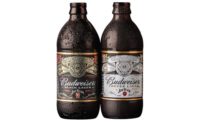The arrival of spring also means the return of various birds. American white pelicans will spend their winter along the Gulf of Mexico, according to the Boreal Songbird Initiative. But as temperatures begin to climb, American white pelicans will begin their migration path up north. Often stopping in lakes in Northern Illinois for a brief rest, the large birds embark to their final destinations in Wyoming and Canada for spring breeding season. Although not as systematic as American white pelicans, American shoppers are undergoing their own migration.
Diversification of the retail market has resulted in consumers dividing their shopping dollars across more specialized channels. Beyond acceptance of specialty brick-and-mortar stores, an increasing number of American shoppers also are embracing an amalgamated approach of in-person and digital shopping.
In a February Insights from New York-based Nielsen titled “It’s time to think omnichannel shopper, not just omnichannel,” the market research firm highlights that 44 percent of American households actively are buying food on- and offline. Because of this, Nielsen says that the edible industry needs to focus on the habits of these shoppers and less on the actual channel.
“As online capabilities have grown, the industry has largely concentrated on developing capabilities to facilitate shopping from all angles,” the Insights states. “The companies that now have those infrastructures in place are well-poised for success. That’s because at the end of 2019, more than 54 million U.S. households had transitioned to true omnichannel shoppers. That’s up 14 percent from just two years earlier, and it means that it’s time to put the consumer — not the channel — at the center of the equation.”
Citing a 2020 report jointly produced with FMI, the Food Industry Association, Nielsen forecasts that 74.7 million U.S. households will be omnichannel shoppers by 2025. “[B]etween now and then, each additional million omnichannel households will add another $8.4 billion in sales,” the Insights states.
Nielsen highlights that industry players should look beyond millennial and Generation Z consumers as the growth is coming from their predecessors. “The 45-54 and 55-64 demos account for the most omnishopper growth, and their spending prowess is much bigger,” the Insights states. “In the past two years alone, these two age cohorts increased their spending by about $20 billion, well ahead of the spending growth of younger generations.”
That market research firm adds that speed, convenience, easy navigation and knowing the most popular categories will be key to engaging with omnichannel shoppers.
“Products focused on convenience and replenishment, such as soft drinks, cookies, pet food and chocolate, are at the top of the food chain,” the Insights states. “But some areas are still crucial traffic-drivers to physical stores. For example, fresh prepared foods remain a key traffic driver in physical stores.”
Winning in-store convenience
Given the complexities associated with omnichannel shoppers, store operators are turning to point-of-sales (POS) and point-of-purchase (POP) solutions to reach shoppers in the stores.
“The single-serve/grab-and-go beverage market has emerged as an important cash center for retailers across the spectrum and the competition for shelf space has increased exponentially,” says Craig Weiskerger, director of marketing and sales for Trion Industries Inc., Wilkes-Barre, Pa.
Weiskerger adds retailers want merchandising solutions that fulfill the following solutions:
- Help products stay to the shelf front without tipping.
- Keeps each individual product in its own lane and easily adjust to the product size.
- Reduce time facing beverages, resulting in cost savings.
- Utilize the full depth of the shelf.
- Present an easy to stock shelf from the front or rear.
Given the proliferation of beverage SKUs, Weiskerger says that brands and retailers could benefit from merchandising solutions that deliver the convenience that consumers want.
“I would recommend the Trion ZipTrack because it utilizes the full shelf depth, even non-standard dimensions, and can be deployed in endless runs,” he says. “Each product lane quickly adjusts to fit a wide variety of beverage widths, while consistently keeping each item pushed to the shelf front for easy customer purchase. The durable, American-made system also eliminates space-wasting gravity feed shelves.”
Weiskerger explains that the ZipTrack can adjust to any beverage category, allowing it to accommodate numerous packaging options.
As convenience will be key for future engagement with shoppers, Weiskerger says that durable systems that can handle varying product sizes while eliminating slanted beverage tipping will play an important role in that future.
“Systems need to keep beverages attractively and consistently displayed at the shelf-front,” he says.







